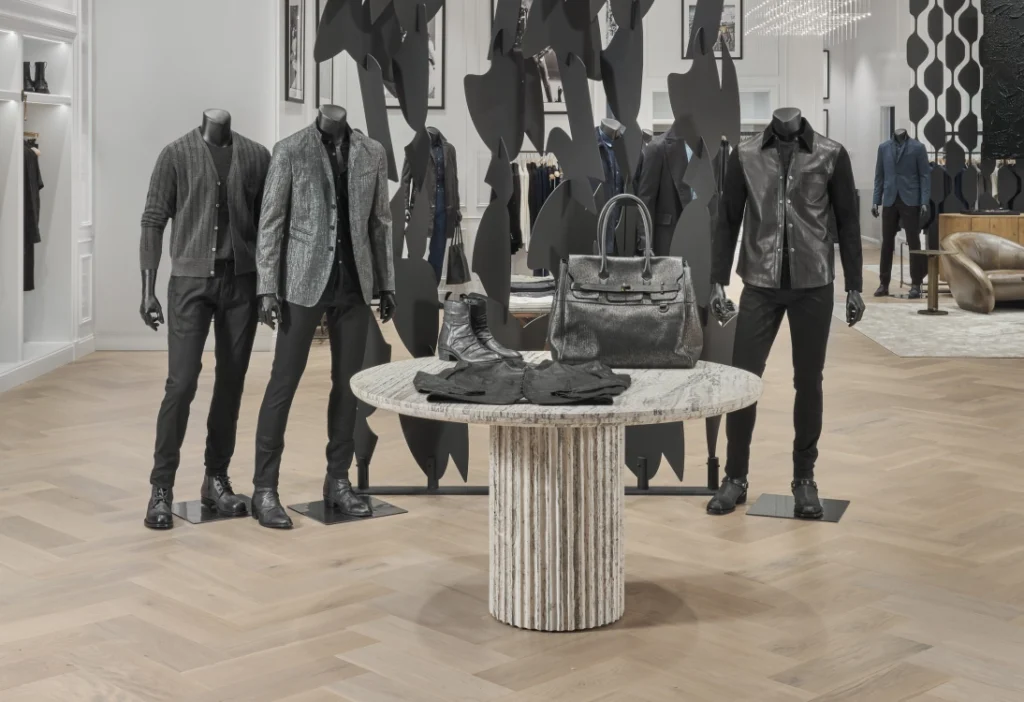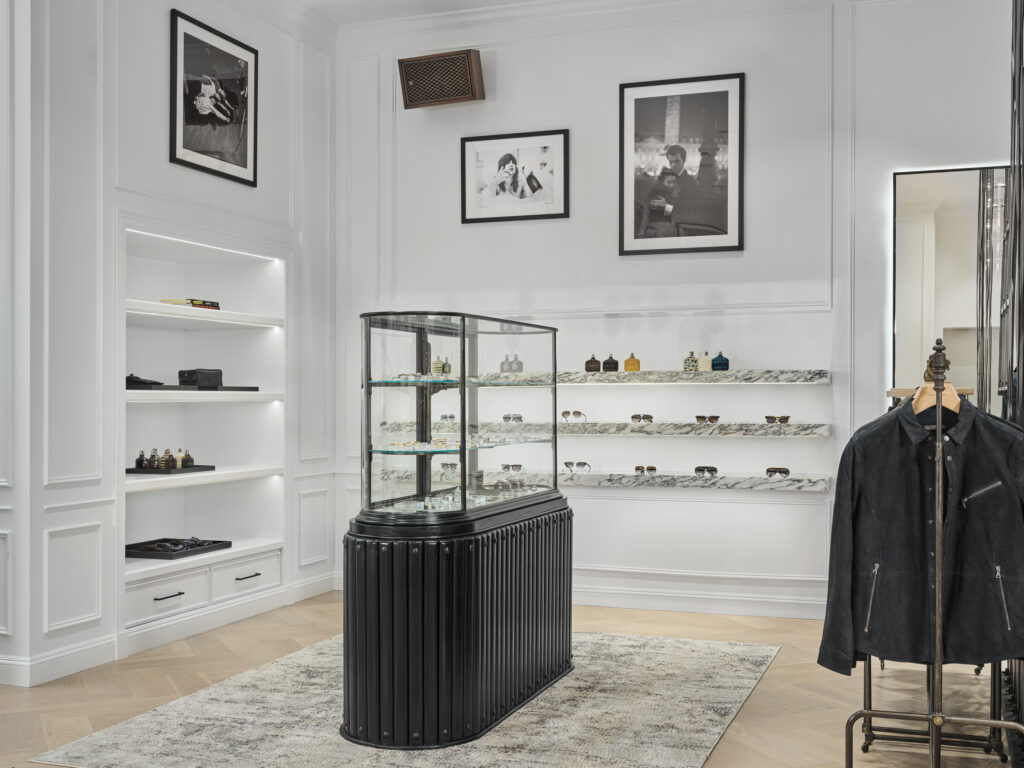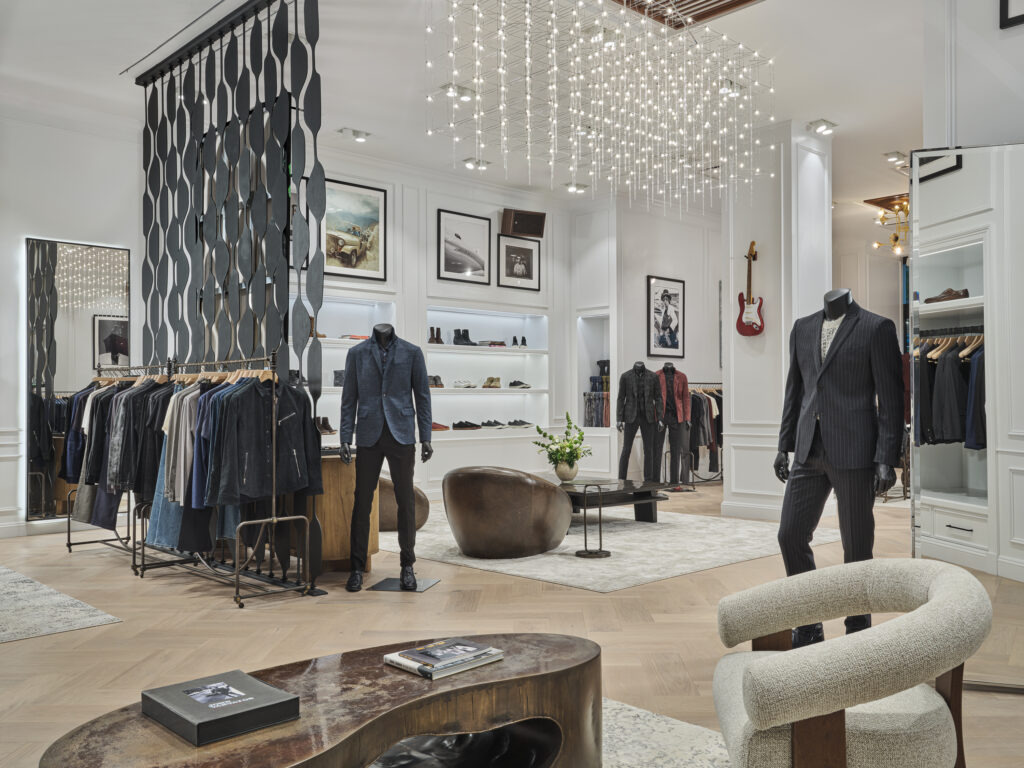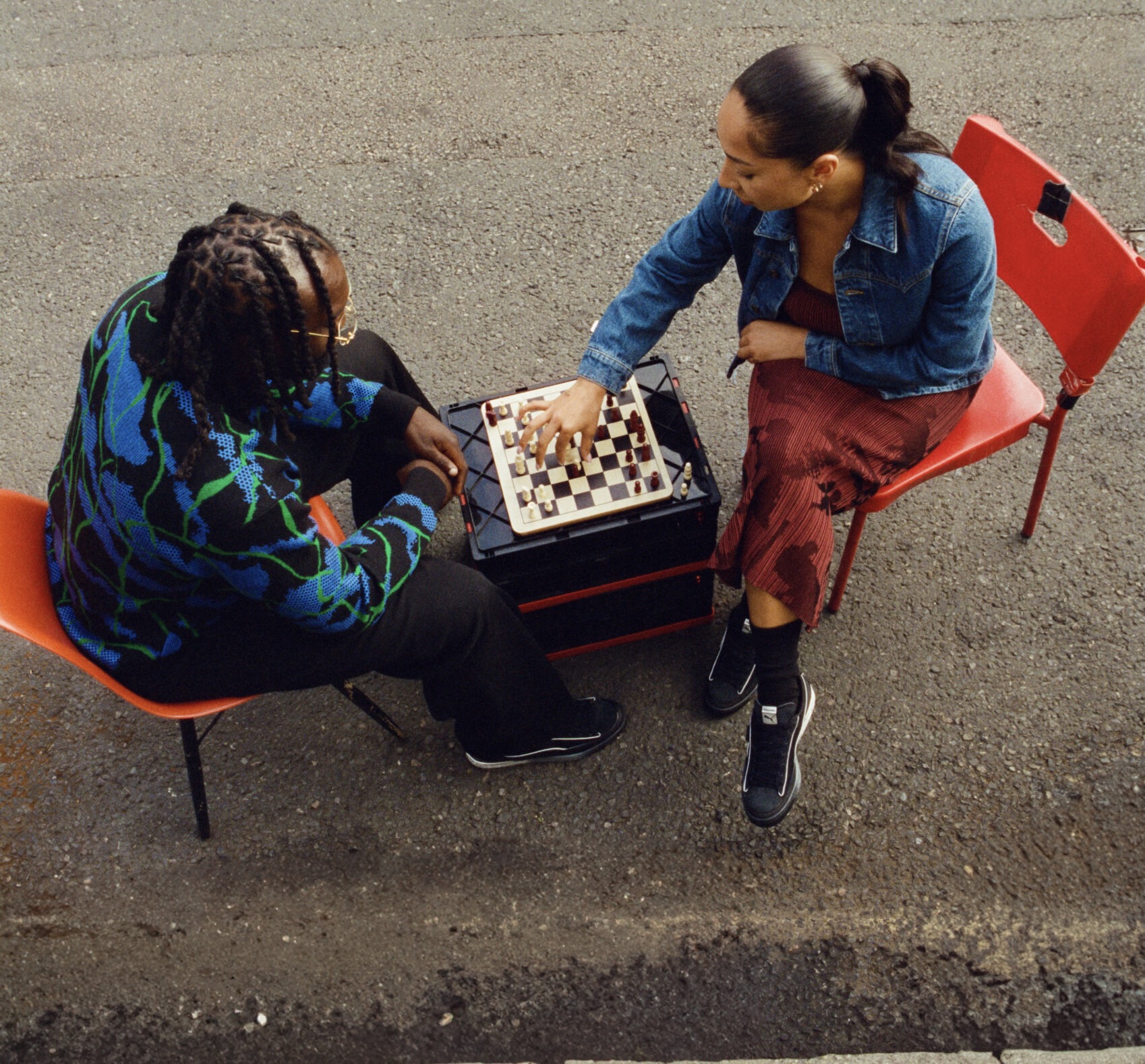the reverb of return
There’s something cinematic about the idea of coming home — the sound of boots on cobblestone, a low hum of guitar distortion echoing from a Mercer Street loft. For John Varvatos, that echo is more than nostalgic; it’s spiritual. Twenty-five years after launching his eponymous label, the designer returns to SoHo, not as a memory, but as a movement reborn.
The new flagship at 73 Wooster Street is less a store than a stage — a space where the brand’s core philosophy of rock-and-roll tailoring reclaims its pulse in downtown Manhattan. The timing feels intentional: 25 years in, Varvatos is both revisiting his foundations and rewriting them, like a band revisiting its first album after a long tour around the world.
This isn’t a revival. It’s a quiet crescendo — a reintroduction with the volume turned to “authentic.”
soho as stage and soul
SoHo isn’t just geography; it’s myth. Once the city’s warehouse quarter, it was later the epicenter of the late-20th-century creative awakening — where Warhol’s silver dream met Basquiat’s graffiti gospel, and later where fashion and sound collided in those dim, denim-lit ateliers.
Varvatos was always part of that conversation, his stores embodying the romance of grit — where leather met silk, and rebellion was pressed into the seams. The new SoHo space continues that lineage with quiet precision: 13-foot ceilings, bronze brick screens, vintage rolling racks sourced from Paris, and Persian rugs that look like they’ve heard stories.
The architecture is open and modular — movable walls that invite transformation, mirroring the brand’s evolution from a rockstar’s wardrobe into a full expression of refined street culture. It’s New York energy without shouting; the kind that hums from the inside.
the aesthetic of rebellion relearned
When Varvatos debuted in 2000, his aesthetic felt like a break in the luxury lexicon — clothes that looked like they’d lived a few nights on the Lower East Side befo\re stepping into the Mercer Hotel. It was masculine but poetic, rough but intentional. Over time, that code became an international language, one adopted by artists, stylists, and a generation of men who wanted their rebellion tailored.
Today, under new leadership — with Karl Åberg as Creative Director and Catherine Jobling as COO — the house is tuning its sound to a new frequency. The SoHo flagship becomes both an archive and amplifier: a physical embodiment of where rock heritage meets contemporary rhythm.
The brand’s latest anniversary collection, “A Love Letter,” bridges those eras beautifully. There are whispers of the past — supple leather jackets, sharp blazers, distressed denim — but the silhouettes have evolved: looser, more relaxed, touched by the confidence of 2025 rather than the urgency of 2000.
Rebellion, after all, grows up — but it never goes quiet.
View this post on Instagram
a love letter to longevity
In fashion, longevity is a quiet form of resistance. Brands often burn bright, then fade; but surviving, reinventing, and returning to your roots — that’s the slow poetry of endurance.
Varvatos’s 25th anniversary collection reads as a confessional — not to celebrity, but to craft. “A Love Letter” is exactly that: a tribute to fabric, fit, and the human pulse that keeps clothes alive.
Inside the SoHo flagship, this emotion is spatial. The furniture is worn but warm, the walls breathe history, and the Morrison Hotel Gallery’s photography turns rock icons into spiritual patrons. Jim Morrison, Iggy Pop, Debbie Harry — faces frozen mid-anthem — surround the racks, as if to remind you that style and sound are eternal collaborators.
It’s a message that hits home in a city where everything changes but everything returns.
View this post on Instagram
John Varvatos’s New York has always been about a particular kind of cool — not the loud kind, not the logo kind, but the cool that lingers after the party ends. His clothes were never costumes; they were conversations.
The new SoHo flagship extends that dialogue to a new generation raised on the crossroads of fashion, streaming culture, and self-expression. Where older Varvatos silhouettes spoke to rock’s aftermath, this new era nods to streetwear’s introspection — the way a hoodie can carry poetry, or a leather jacket can mean belonging.
That’s the subtle brilliance here: Varvatos isn’t chasing trends. He’s translating them, threading his legacy into a modern syntax that feels emotionally native to downtown life.
The walls of the store hold that sentiment. They whisper of vinyl collections, of lost nights at CBGB’s, but also of quiet mornings where self-expression is the new luxury.
soho: the mirror and the muse
To write about Varvatos’s SoHo is to write about the city itself — its shapeshifting nature, its refusal to be pinned down. This part of Manhattan has seen everything: bohemia, decadence, decline, rebirth. Each decade leaves a trace — a new accent on the same rhythm.
Varvatos’s store becomes part of that continuum, both reflection and participant. Like the graffiti on Crosby Street, it’s as much a statement as it is a memory. And maybe that’s what makes this moment more than a commercial debut — it’s cultural homecoming, built on the bones of ambition and the memory of creative unrest.
In a time when so much of fashion feels detached from its roots, this return feels personal. The store doesn’t scream “luxury.” It hums “home.”
tailoring the soundtrack of a gen
There’s always been music in Varvatos’s design — literal and figurative. From campaigns featuring legendary rockers to the now-iconic store that once occupied the former CBGB space, the brand’s narrative is composed like a setlist: moments of tension, drops of vulnerability, bursts of swagger.
Now, with SoHo as backdrop, that setlist continues — only this time, the sound is more nuanced, the rhythm more deliberate. It’s the sound of someone who’s seen both sides of fame and found peace in creation.
Even the clothes echo that shift: supple leathers cut with restraint, soft knits that feel like afterglow, accessories with the patina of time. The styling suggests motion but not chaos — rhythm without noise.
No comments yet.










